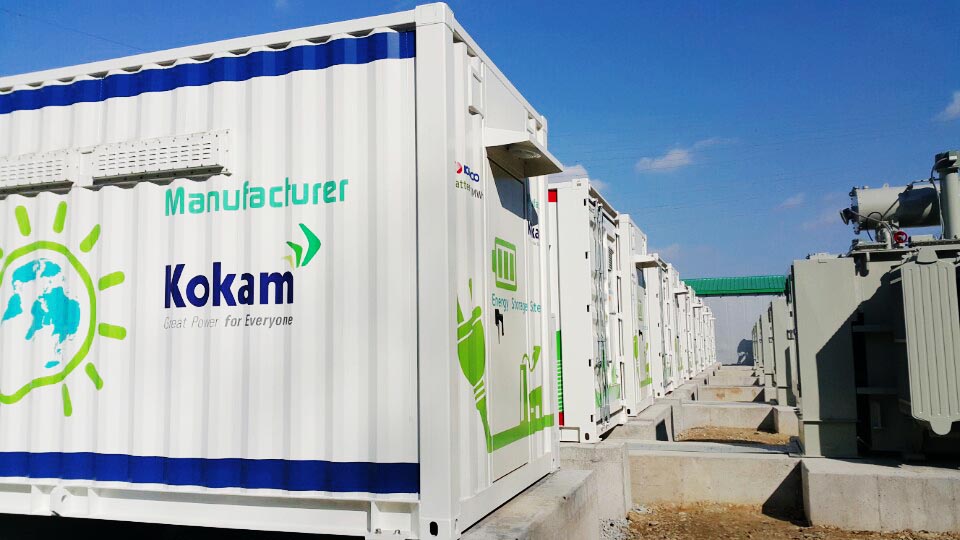By Jennifer Runyon
Renewable Energy World
Two massive lithium nickel manganese cobalt (NMC) oxide energy storage systems (ESSs) by Kolkam will provide frequency regulation for Korea Electric Power Corporation
On March 8, Kolkam announced that it had deployed two battery energy storage systems powered by nickel manganese cobalt oxide in South Korea. The company installed a larger 24-MW / 9-MWh system and a 16-MW / 6-MWh system both of which will perform frequency regulation for Korea Electric Power Corporation (KEPCO). The company said that the 24-MW / 9-MWh system is the largest capacity Lithium NMC ESS used for frequency regulation in the world.

Operational since January 2016, the two systems, along with a Kokam 16-MW / 5-MWh Lithium Titanate Oxide ESS system deployed in August 2015, provide KEPCO with 56 MW of energy storage capacity for frequency regulation. These three systems are part of the world’s largest ESS frequency regulation project, which is expected to deploy 500 MW of battery-based energy storage when it is completed in 2017.
KEPCO commissioned the project and will own the system. The ESS will enable KEPCO will to improve its operational efficiency by reducing the need for spinning power generation reserves. This will allow KEPCO to shift energy generation to lower cost, more efficient power plants and decrease “wear and tear” on all its power plants, said a Kokam spokesperson. KEPCO estimates that the three storage systems will deliver an annual savings of US $13 million in fuel costs alone, which it said is three times the ESSs’ purchase price over the systems’ lifetimes. In addition, the ESS will reduce CO2 emitted by the utility.
Kokam said that its batteries provide ultra high power technology, which is designed for high-power energy storage applications, such as frequency regulation, wind or large solar power system ramp rate control, Uninterrupted Power Supply (UPS) and voltage support. The batteries have a higher density, which enables 2.4 MWh of energy storage to be installed in a 40-foot container, compared to 1 to 1.5 MWh of energy storage for standard NMC batteries. Kokam said the batteries last up to 10,000 cycles and have a heat dissipation rate that is 1.6 times better than standard NMC technologies.
Kokam said it has 650 MWh of energy storage capacity installed in 50 countries and 95 MW of energy storage system capacity in operation around the world.
Image Caption: Kokam 24-MW Energy Storage System (ESS), deployed for use by South Korea's largest utility, Korea Electric Power Corporation (KEPCO), is the world’s largest Lithium NMC ESS for frequency regulation. Credit: Kokam.